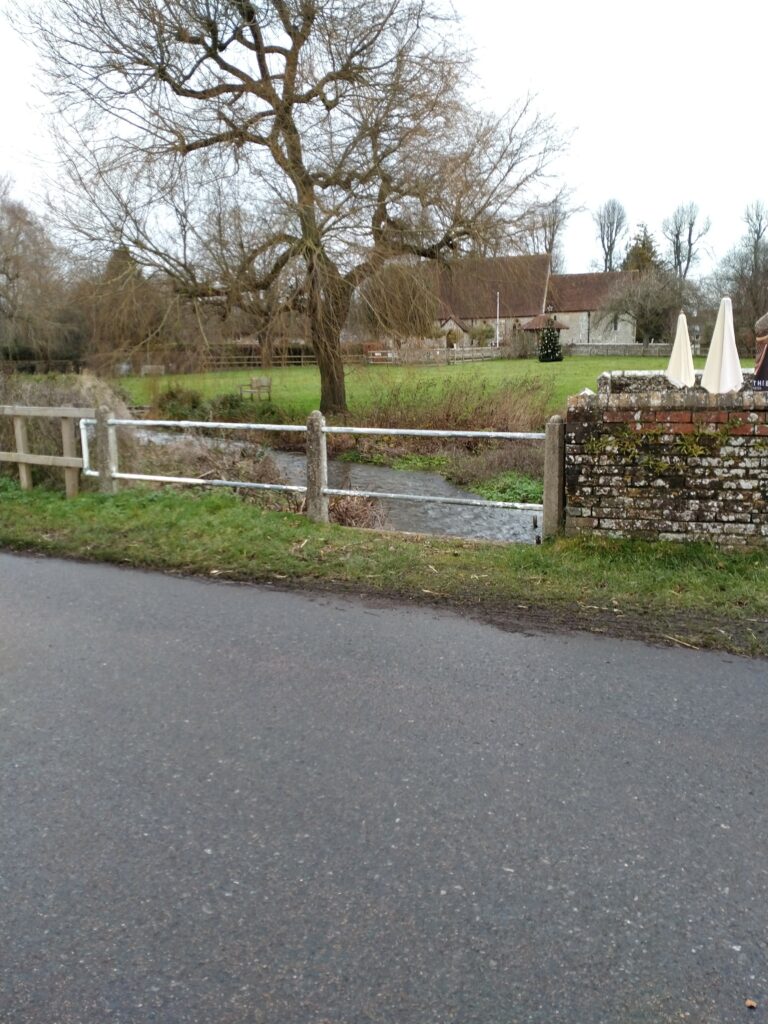By Tim Lambert
Early Meonstoke
In 1984 a Saxon man was discovered at Meonstoke. Furthermore, a Roman building was discovered about 1 kilometre north of Meonstoke. In 1987 a Bronze Age woman from about 3,000 BC was discovered.
There is an old legend that the Romans tried to build the city of Winchester on Old Winchester Hill but each morning when they arrived for work they found the stones they had laid had rolled down the hill! Eventually, they gave up and built Winchester on its present site! However, the Romans left Britain at the beginning of the 5th century.
Then in the 6th century, a tribe of Jutes from Denmark called the Meon settled along a river valley in Hampshire. The River Meon takes its name from them. The word stoc meant a hamlet dependent on a larger village nearby. That is how Meonstoke got its name.
The origin of the name Corhampton is obscure. At the time of the Domesday Book, it was Quedementune. The word tune (pronounced tun) meant hamlet or estate but it is not known for certain what the first part of the name meant.
Exton was Essessentune at the time of the Domesday Book. It is believed it was once East Saxon tun or the estate of the East Saxon (from Essex).
However, by the time of the Domesday Book in 1086 Meonstoke (or Menestoche as it was called) was quite a large village. It had a population of about 150. That was a fair size for the time. Many villages were smaller.
At that time Meonstoke belonged to the Bishop of Winchester. Three huge fields surrounded it and it had a watermill where grain was ground to flour for the villagers. There was also a watermill at Corhampton.
Corhampton has a Saxon church that was built in the early 11th century.
In the 13th century Meonstoke was granted a weekly market and an annual fair. (In those days there were no shops and if you wished to buy or sell anything you had to go to a market. Fairs were like markets but they were held only once a year and they attracted buyers and sellers from a wide area). So Meonstoke was, apparently an important local centre.
However, in the 1660s a tax was placed on hearths and it showed there were only 49 hearths in Meonstoke which gave it a population of probably less than 250.
In 1719 many of the houses in Meonstoke were destroyed by fire. Altogether 23 buildings were burned down, which was probably about half the total.
Furthermore, in 1790 Meonstoke suffered an epidemic of smallpox. (A terrible disease, which even if it did not kill you could leave you with scars or blindness).
Modern Meonstoke
In 1801 at the time of the first census, Meonstoke had a population of about 300. So it was a quiet little village where the people worked on farms. The population of Meonstoke reached a peak in the mid-19th century when it was over 500. It then declined to a little over 400 by 1901.
In 1801 Corhampton only had a population of 120. In 1901 it had only increased to 173. In 1801 Exton had a population of 224. By 1901 it had only increased to 257.
Most of the people of Meonstoke worshipped at the parish church. It was built about 1230 and was at first dedicated to St Mary. It was renamed St Andrew’s Church in 1830. The church was restored in 1871 and a new wooden tower was built in 1903.
In 1842 a National (Church of England) school was built in Meonstoke. In 1894 Meonstoke gained a parish council.
During the First World War 22 men from Meonstoke were killed and another 5 were seriously wounded.
In the early 20th century Meonstoke remained a small and sleepy village. It did not have a piped water supply till 1954!
However even then Meonstoke was growing and about 35 new houses were built in the 1950s and 1960s. Today the population of Meonstoke is about 650. The village has a pub, The Bucks Head.
